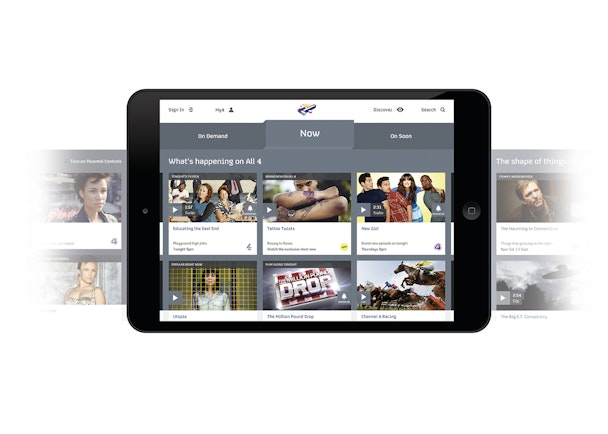Channel 4 to introduce Moat as advertising measurement debate heats up
Channel 4 is eyeing a partnership with ad measurement firm Moat – employed by Facebook and Snapchat amongst others – later this year, the broadcaster's sales director has revealed.

Channel 4
Spurred by the scrutiny on Google over the last week and the comments made by P&G’s top marketer earlier this year on the “murky at best, fraudulent at worst media supply chain,” Johnathan Allan was quizzed on its own resistance to introduce third-party measurement.
During a heated breakfast event at Advertising Week Europe today (21 March), Sally Silver, managing director at Dentsu Aegis-owned agency Amplify said there is a “frustration” among media buyers and advertisers on the continued “conversations” with broadcasters about sharing more of their data that haven’t resulted in action.
“I understand why you would want that,” said Allan. “Clearly, we also must protect our viewer and publisher data. We have concerns when cookies and trackers are placed on our sites as intermediaries can use it to sell on. We’ve had that in the past. So, that’s why we don’t [allow it]. But we are fully independently audited so we’re being as transparent as we can.”
However, he went on to assure that it is “looking at introducing Moat” as an independent measurement tool, saying it’s the “best in class at the moment”.
“We’re talking to them about bringing that on board this year,” he said.
Moat dubs itself as an “attention analytics specialist” that measures the sight, sound and motion of a video, determining whether it has been watched by a human or a bot and if the user has listened to the ad.
Last November, following revelations of mis-measurement, Facebook extended its partnership with Moat while Snapchat also sought it out ahead of its IPO.
Creating industry wide standards
While Channel 4 is now looking to appease advertisers by introducing a independent vendor to say its own ad offering is effective, the calls for standardised independent measurement across the digital ecosystem have reached new heights in recent months amid increased scrutiny of digital budgets. These have heightened further of late in wake of The Time’s expose on ad misplacement within Google and YouTube.
However, Andrew Challier chief client officer at Ebiquity urged that while the concept of independent verification is right - although “what it looks like, god knows” - the onus is on the advertisers to “put the pressure on by asking the right questions.
“This is a tipping point for going from digital adolescence to adulthood,” he said.
Santander’s senior media strategist Daniel Creed agreed, saying that while there “should be” a governing third-party, when you have multiple media owners with their own standards, quite simply the numbers an overarching third-party produces could still be “fudged”
“You can’t say that having a common standard is the solution,” he said. “If you’re an advertiser then you’re the money and you have to say what’s acceptable and what’s not. You have a responsibility to go to all the third parties, all the media agencies and media owners and identify what you think is right. There should be support in creating the standards but getting the industry to mark its own homework probably isn’t satisfactory. That’s where advertisers need to step forward and decide where to draw the line, to know what they need to see internally.”
Channel 4’s Allan also raised concerns that a common standard of measurement, namely for video, aren’t particularly great and that trying to get to a point where we’re comparing “apples with apples” could see the broadcaster coming off worse.
“I’m not sure the MRC standard or Facebook 3-second improve brand metrics. But clearly, I’m a TV guy and I’d say that,” he said.
“I worry if all video is viewed as ‘video’ then we’re seen as expensive. Because we have a quality product and you view the whole ad verses a long tale MPU where half the ad is viewed for a second, in a spreadsheet we get planned out. So I worry agencies and clients may think apples are apples, but it’s not.”
YouTube, Facebook and Snapchat have been increasinly to show their platforms can be an alternative place to put TV budgets. Allan referenced the broadcaster's own report, released today, that claimed advertisers are paying more per minute for completed views on YouTube and Facebook despite the viewer being less inclined to watch them compared to broadcaster VOD.
Although. as Silver pointed out, it was not third-party verified so questioned why it should be trusted.
Silver summed up by saying that while she didn’t know where to start on establishing an independent measurement body, but said “we need to start by having acceptance by everyone of independent verification, whatever the metrics. Because you then have a measurement point. And it’s custom. And then we need to proof the value of context because we still haven’t got the metrics in place to work out the value of context and adapt media on that basis.”

